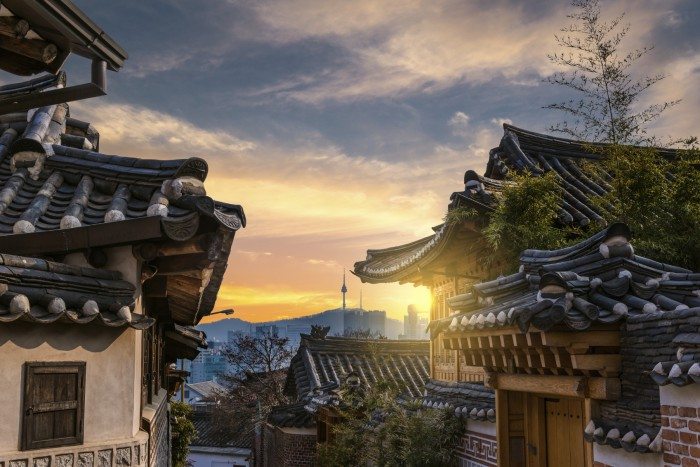
Korea is a small country with a lot to offer, and the word is getting out. It’s quickly becoming a popular destination, with almost 11 million tourists visiting in 2015, making it the 29th most visited country in the world, according to the World Economic Forum’s Travel and Tourism Competitiveness Report. Tourism in Korea will only grow stronger as more people visit and spread the word, and as the Hallyu Wave continues to surge onto the shores of other countries, carrying Korean music (K-pop), television, fashion, and more.
So, why Korea? And what should you do there? Here are some of the most important things to experience on your trip to Korea.
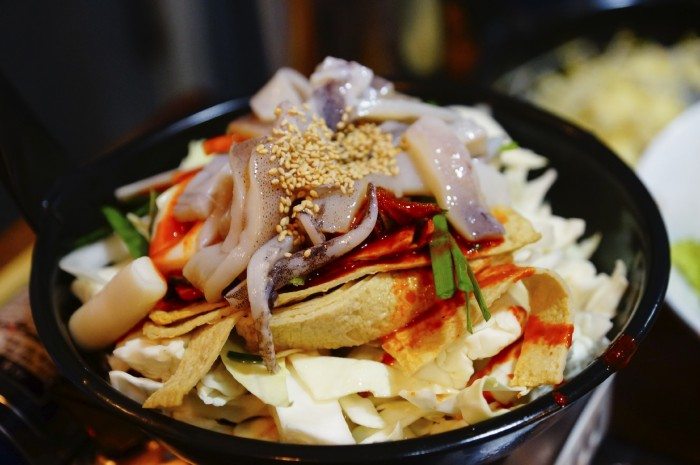
1. The food
It’s almost impossible to begin our journey anywhere else. Korean food is exciting and diverse, with a wide array of ingredients and flavors. Dishes are made with a large range of meats, fish, vegetables, grains, and nuts. There is a tradition of drying, salting, and fermenting foods, and raw food is common as well. The flavors used in Korean cuisine are unique and potent. Chef Hooni Kim says you can often find all five flavors—sweet, salty, spicy, sour, and acidic—in a single dish. In addition to just being delicious, Korean food also makes for a great family or group dining experience; you often cook Korean barbecue at your own table and you share dishes with your friends and family.
Some of the most famous Korean dishes include kimchi, bulgogi, bibimbap, and Korean barbecue (especially galbi and samgyeopsal), but there are dozens more you should try when you’re in Korea.
Read 6 Bizarre Foods to Try in Korea
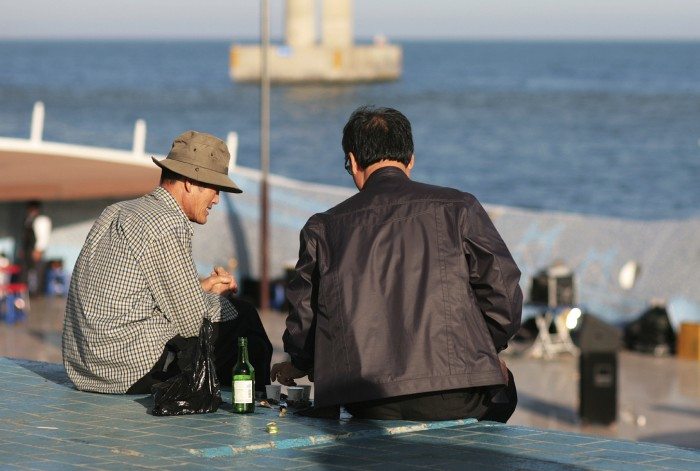
2. Soju
You can’t have a true Korean experience unless you consume (a responsible amount of) soju.
Soju was traditionally made with rice, wheat, or barley, but nowadays is made with ethanol and water. If you’ve never heard of it before, take notice: in 2014, Jinro soju was the best-selling alcohol in the world, with about 71 million cases sold worldwide. Koreans drink more liquor than any other country in the world, including more than twice as much as Russia—yes, TWICE. The average person of drinking age kicks back about 13.7 shots per week, and the drink of choice is soju.
Indeed, if you go to Korea you’re sure to see groups of lively young Koreans sitting around BBQ joints and bars drinking soju, numerous green soju bottles scattered around their table. You may also have the pleasure of sitting next to a businessman on the bus or subway, the smell of soju wafting off him so powerful that you’re not sure how he’s still functioning.
Soju is usually consumed neat, but there are soju cocktails as well. It also comes in various flavors including blueberry and grapefruit. Soju can also be consumed with maekju, or beer. Together, this drink is called somaek. It’s especially popular with young people. Gunbeh! (Cheers)
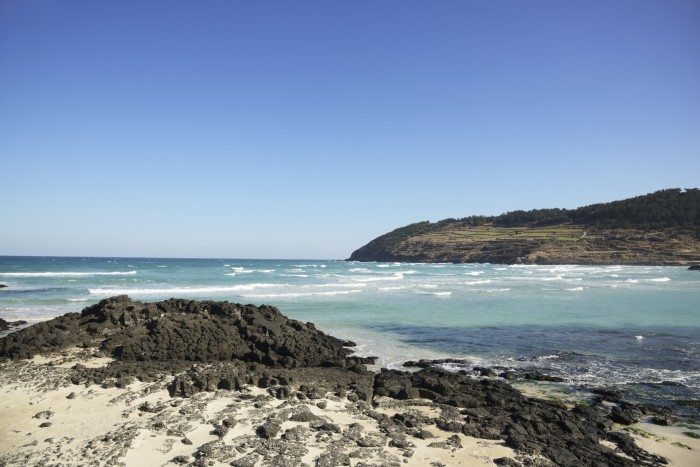
3. Jeju-do
Koreans are very proud of Jeju-do, and they should be. Located off the south coast of Korea, Jeju-do is Korea’s largest island. It’s a popular vacation destination for Korean couples, families—and, increasingly, foreigners. Jeju offers gorgeous beaches, great hiking, delicious food, and an adult theme park called Loveland. What more can you ask for in a (grown-up) vacation?
Jeju is also home to the haenyo, or female free divers. These iconic women are known for their ability to dive up to 20 meters while holding their breath, collecting abalone, octopus, sea urchin, and seaweed. In the 1960s, there were more than 30,000 haenyo diving off the shores of Jeju and Udo island. Now there are only about 5,000, and most are over age 60. Some believe that this tradition dates back 1,700 years.
4. Learn a little Hangul
Hangul (한글) is the Korean alphabet. It was invented in 1444 under the reign of King Sejong, who is thought to have been personally involved in its creation. Hangul is a source of great pride in Korea, and there is even a holiday to celebrate it—October 9th is Hangul Day.
You may be thinking “Learn some Hangul?! How is that possible? I don’t have time for that!” Oh, but it is possible and if you study it for even one hour you could actually learn a fair amount. Hangul is considered to be one of the easiest written languages to learn. It consists of 24 consonants and vowels which are put together in syllabic blocks. Start by learning the individual letters, then study how they are put together in blocks (left to right and top to bottom).
There are numerous apps, websites, and YouTube videos dedicated to helping people learn Hangul. Before you go to Korea, download an app and spend a few minutes each day studying Hangul. When you get to Korea, you’ll be able to recognize some letters and maybe even a few words, and trust me—you’ll feel like a superhero.
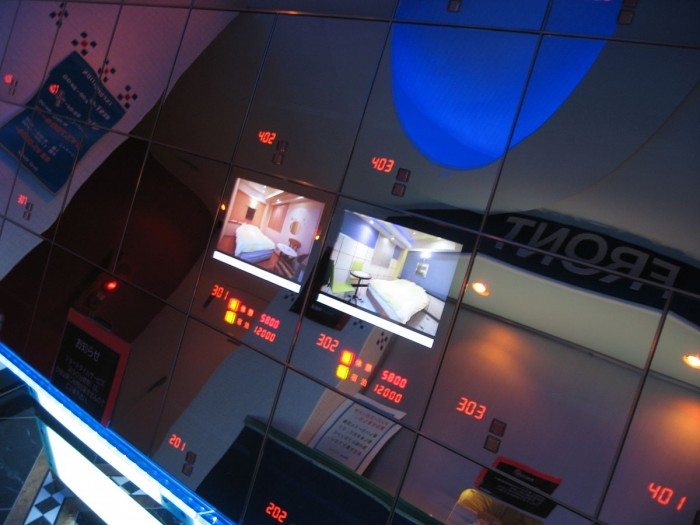
5. Love motels
Love motels are an institution in Korea, and by the name you can probably guess their historical purpose. You can identify a love motel by its often flashy exterior and the low-hanging plastic curtain concealing the parking lot/entrance. They’re usually found clustered together.
You may associate the phrase “love motel” with seediness, and, well, naughty behavior, but it would be a mistake to steer clear of them for these reasons. There are some dodgy love motels, sure, and love motels are indeed a place for couples to go and have some private time. But these days you can find a wide range of styles, amenities, and prices—and many are a great value for your money compared to other hotel options in Korea.
Many love motels have Jacuzzi tubs, big-screen TVs, mini fridges, and computers. Upon check-in (which is often conducted through a small window to ensure customers’ privacy), you’re usually given a little pouch filled with a toothbrush, comb, bubble bath, and sometimes some other…useful…items. Rooms often have quirky décor, and there are even themed rooms; themes include Batman, casino, even ramen. Want a room with glow-in-the-dark walls and furniture? A rotating bed? Korea’s got you covered.
6. Jjimjilbang
A jjimjil-what?
A jjimjilbang (찜질방) is a 24-hour Korean bathhouse, separated into a gender-segregated bath area and unisex saunas, massage areas, entertainment lounges, and sleeping rooms. The fancier jjimjilbangs have multiple floors and amenities such as singing rooms, internet cafés, meeting rooms, mini gyms, snack bars, and more. They’re extremely popular in Korea and it’s not uncommon to see parents and children and friends of all ages relaxing together.
If you choose to go to the bathhouse part, you have to disrobe…completely. However, remember that it’s separated by gender, and while the first few minutes can be weird, most people settle into the experience pretty quickly and it can feel quite liberating. It’s an easy, unique, and very cheap way to pamper yourself. For about ₩10,000–₩15,000 (S$12–S$18), you’ll emerge with the cleanest, smoothest skin you’ve ever had and ready to take on the world.


Soju used to be a distilled rice wine (or distilled from sweet potatoes, which is probably even more authentic and historical)….HOWEVER nowadays, all but the most expensive (very very expensive!) stuff is made with pure ethanol mixed with flavoring. It is basically just watered down everclear or labratory grade alcohol. That is why it is dirt cheap, and also why it usually doesn’t make you too hung over.
Instead of talking about soju, if the writer had bothered to do any actual research (obviously not the case) he/she would have mentioned Makkeolli (or it’s better variant Dong Dong Ju) instead…still made with rice, delicious, and interesting (unique) rice wine that isn’t “distilled”… A close inspection of a lot of other alcohol products in Korea will show you that the whole industry is crooked as hell…ethanol is a major ingredient of many of the products that are put in traditional bottles…it is kind of sad, really.
But Dongdongju is the real deal.
Hi Alvn, thanks for your correction on the Soju. You’re absolutely right, nowadays it is made with ethanol. Great recommendations for alternatives to soju after the readers have tried Korea’s and the world’s most popular alcohol. Cheers!
Have you tried makkeolli or it’s close cousin dongdongju? Anyhow, sorry if my comment sounded a tad rude, but then I’ve lived in the country for 7+ years so I guess I’m a bit of a connoisseur..If I knew someone would read it, I’d write a similar article! lol.
Hi there! Thank you for your comment and for the correction. I’m the writer, and I lived and worked in Korea until very recently. I also love makgeolli, but, sadly, I had to exclude it in this article.
I encourage you to write about your experiences in Korea. 7+ years in Korea is definitely long enough to have some expertise!
Thanks,
Whitney
Oh, I could write more than one book. And I might eventually…thanks for the encouragement.